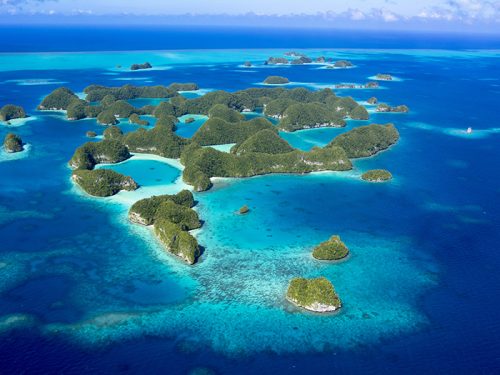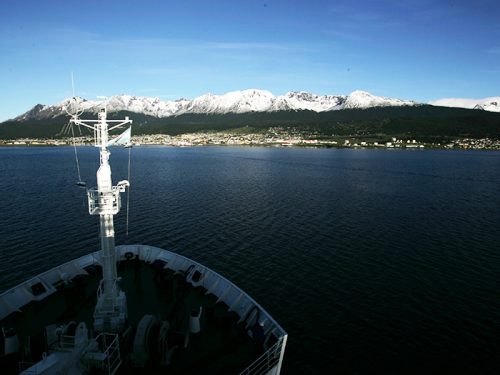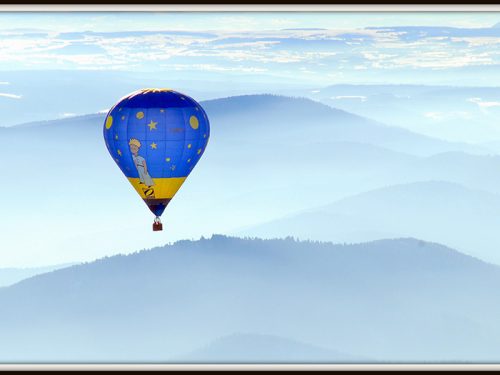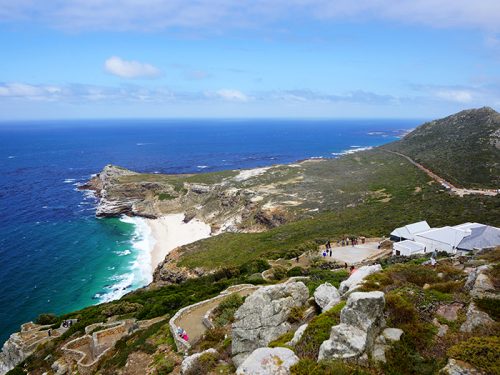지구 남반구 크루즈의 낭만 - 항해작가가 선택한 꼽은 역사 이야기

아프리카 대륙 남단의 희망봉, 그리고 남미대륙의 마젤란 해협을 통과하는 지구 남반구 크루즈는 피스보트 세계일주 크루즈에서도 큰 인기를 자랑하는 항로입니다. 과거 헤아릴 수 없을 만큼 많은 선원들이 지나간 이 항로에는 많은 역사의 드라마가 존재합니다. 대항해시대에서 근현대시대까지, 지구 남반구 항로에 얽힌 이야기들을 소개합니다.
라이터 소개: 카나마루 토모요시(크루즈 전문 라이터)일본 각지를 비롯해 세계 5대륙을 크루즈로 방문한 경험을 가진 크루즈 전문 라이터. 세계의 크루즈선을 소개하는 '크루즈쉽 콜렉션'의 집필과 잡지'크루즈'(해사프레스사) 등에 크루즈와 관련된 기사와 컬럼등을 기고하고 있다.

일본 최초 지구 남반구 세계일주를 달성한 "신 사쿠라 마루"
희망봉과 마젤란 해협을 통과하는 지구 남반구 크루즈를 일본 최초로 달성한 것은 1999년의 피스보트 크루즈였다. 당시 사용객선은 "신 사쿠라 마루"호로 일본 객선으로도 쾌거라고 할 수 있는 사건이었다. 마지막 남미대륙 이민선으로 일본에서 알려진 1973년 "니혼마루"이후 약 20년만의 일본객선의 대서양 횡단이자 최초의 남반구 세계일주 였다. 이후 신 사쿠라 마루호도 지구 남반구 세계일주 이후 동년 은퇴, 당시의 출,도착지인 도쿄하루미(晴海)객선 터미널도 2022년 2월 20일을 기해 폐관되어 이제는 책에서만 그 모습을 볼 수 있게 되었다. 수 많은 뱃사람들이 거쳐간 지구 남반구 항해에 관한 이야기를 본 에세이에서 소개하고자 한다.

행방불명이 된 "어린 왕자"의 작가
마다가스카르섬의 바오밥 나무는 프랑스의 작가 앙투안 드 생텍쥐페리(1900-1944)의 소설 "어린 왕자"에서도 나오는 나무다. 소설을 쓴 생텍쥐페리는 뛰어난 파일럿이기도 하여 1935년 프랑스와 베트남간의 최단시간 비행기록에도 도전한 바 있다. 이 때 생텍쥐페리는 사하라 사막에 불시착하여 이집트의 카이로까지 3일간 걸어 기적적으로 생환하였고 이때의 경험으로 탄생한 것이 소설 "어린 왕자"다. 생택쥐베리는 이후 세계2차대전에 참전, 1944년 어느날 정찰기로 출격한 이후 소식이 끊겼다. 행방불명으로부터 54년후, 프랑스 마르세이유 만에서 "어린 왕자"의 출판사명과 주소가 새겨진 은제품 등이 있는 기체의 잔해가 발견되었으며, 작가 탄생 100주년이 되는 2,000년에 해당 기체의 잔해가 생텍쥐페리가 탑승한 기체로 확인되었다.

희망봉과 브라질을 발견한 탐험가
포르투갈의 주앙 2세는 인도와 아시아에 달하는 교역로 발견을 위해 바르톨로메우 디아스(1450년경 - 1500년)을 원정대의 대장으로 임명한다. 디아스는 1488년 큰 풍랑을 만나 약 2주간 표류를 하면서도 아프리카 대륙 남단에 도착, 인도로의 길을 여는데 성공한다. 하지만 도착까지 겪은 험난한 항해로 인해 인도까지 도착하지 못하고 포르투갈로 돌아갈 수 밖에 없었다. 험난한 항해의 끝에 발견한 곶을 "폭풍의 곶"으로 보고하였으나, 주앙 2세는 이 발견이 동방으로 이어지는 길이 이어졌음을 기뻐하며 "희망봉"으로 이름을 바꾸게 된다. 이후 디아스는 남미 항해에서 브라질 발견에 입회하기도 하였으나 이후 해난사고로 사망하여 생애 인도의 땅을 밞지 못하였다.

파타고니아의 유래가 된 거인들
1519년 인류 최초로 세계일주에 도전한 페르디난드 마젤란(1480-1521)은 항해 도중 남미에서 신장 3-4미터에 달하는 거대한 선주민족과 만났다고 전해진다. 마젤란은 이들을 파타곤이라고 명명하고, 이 후 이 땅은 파타고니아라고 불리게 되었다. 마젤란이 다녀간 이후, 유럽인들이 파타고니아에 도착하였을때 선주민족들은 키가 2미터가 채 되지 않았음이 판명되어 거인들을 만났다는 마젤란의 이야기는 허구로 밝혀진다. 마젤란이 만난 거인들은 테우엘체족(남성의 평균신장 180cm)으로 추측된다. 하지만 이들 선주민족은 19세기 후반 유럽에 의한 식민화가 본격화되면서 전염병, 전쟁등의 영향으로 크게 인구가 줄어 현재 파타고니아에는 약 200명 정도의 선주민족만이 생활하고 있는 것으로 알려져 있다.
PHOTO:PEACEBOAT, Matsuda Sakika, Mizumoto Shunya, Nakamura Mitsutoshi, AdobeStock, shutterstock.com
